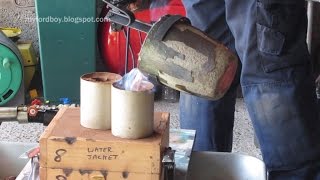Thursday, 25 December, 2025г.
















Где искать: по сайтам Запорожской области, статьи, видео ролики
пример: покупка автомобиля в Запорожье
What is BRASS ERA CAR? What does BRASS ERA CAR mean? BRASS ERA CAR meaning, definition & explanation
✪✪✪✪✪ http://www.theaudiopedia.com ✪✪✪✪✪
What is BRASS ERA CAR? What does BRASS ERA CAR mean? BRASS ERA CAR meaning - BRASS ERA CAR definition - BRASS ERA CAR explanation.
Source: Wikipedia.org article, adapted under https://creativecommons.org/licenses/by-sa/3.0/ license.
SUBSCRIBE to our Google Earth flights channel - https://www.youtube.com/channel/UC6UuCPh7GrXznZi0Hz2YQnQ
The Brass Era is an American term for the early period of automotive manufacturing, named for the prominent brass fittings used during this time for such things as lights and radiators. It is generally considered to encompass 1896 through 1915, a time when these vehicles were often referred to as horseless carriages.
Elsewhere in the world this period would be considered by antique car enthusiasts to consist of the veteran (pre-1904), and Edwardian eras, although these terms are really not meaningful outside the former British Empire.
Within the 20 years that make up this era, the various experimental designs and alternative power systems would be marginalised. Although the modern touring car had been invented earlier, it was not until Panhard et Levassor's Systeme Panhard was widely licensed and adopted that recognisable and standardised automobiles were created. This system specified front-engined, rear-wheel drive internal combustion engined cars with a sliding gear transmission. Initially the high-wheel motor buggy (resembling the horse buggy of before 1900) was in its heyday, with over 75 makers, including Holsman (Chicago), IHC (Chicago), and Lincoln Motor Car Works but were only gradually abandoned, in favor of the more advanced runabouts, tonneaus and other more expensive closed bodies – and killed off by the Ford Model T.
In the early part of this period steam-car development had advanced, making steam cars some of the fastest road vehicles of their day. Electric cars also held a market share throughout the era.
Development of automotive technology was rapid, due in part to hundreds of small manufacturers competing to gain the world's attention. Key developments included the electric ignition system (by dynamotor on the Arnold in 1898, though Robert Bosch, 1903, tends to get the credit), independent suspension (actually conceived by Bollée in 1873), and four-wheel brakes (by the Arrol-Johnston Company of Scotland in 1909). Leaf springs were widely used for suspension, though many other systems were still in use.
Transmissions and throttle controls were widely adopted, allowing a variety of cruising speeds, though vehicles generally still had discrete speed settings, rather than the infinitely variable system familiar in cars of later eras. Safety glass also made its debut, patented by John Wood in England in 1905 but would not become standard equipment until 1926 on a Rickenbacker. Angle steel took over from armored wood as the frame material of choice, and in 1912, Hupp pioneered the use of all-steel bodies, joined in 1914 by Dodge.
Теги:
dictionary english dictionary online dictionary vocabulary english vocabulary online vocabulary how to pronounce words what do words mean brass era car what is brass era car brass era car meaning brass era car definition brass era car explanation what is the meaning of brass era car what is the definition of brass era car what does brass era car mean what does brass era car stand for
Похожие видео
Мой аккаунт


 У вашего броузера проблема в совместимости с HTML5
У вашего броузера проблема в совместимости с HTML5


